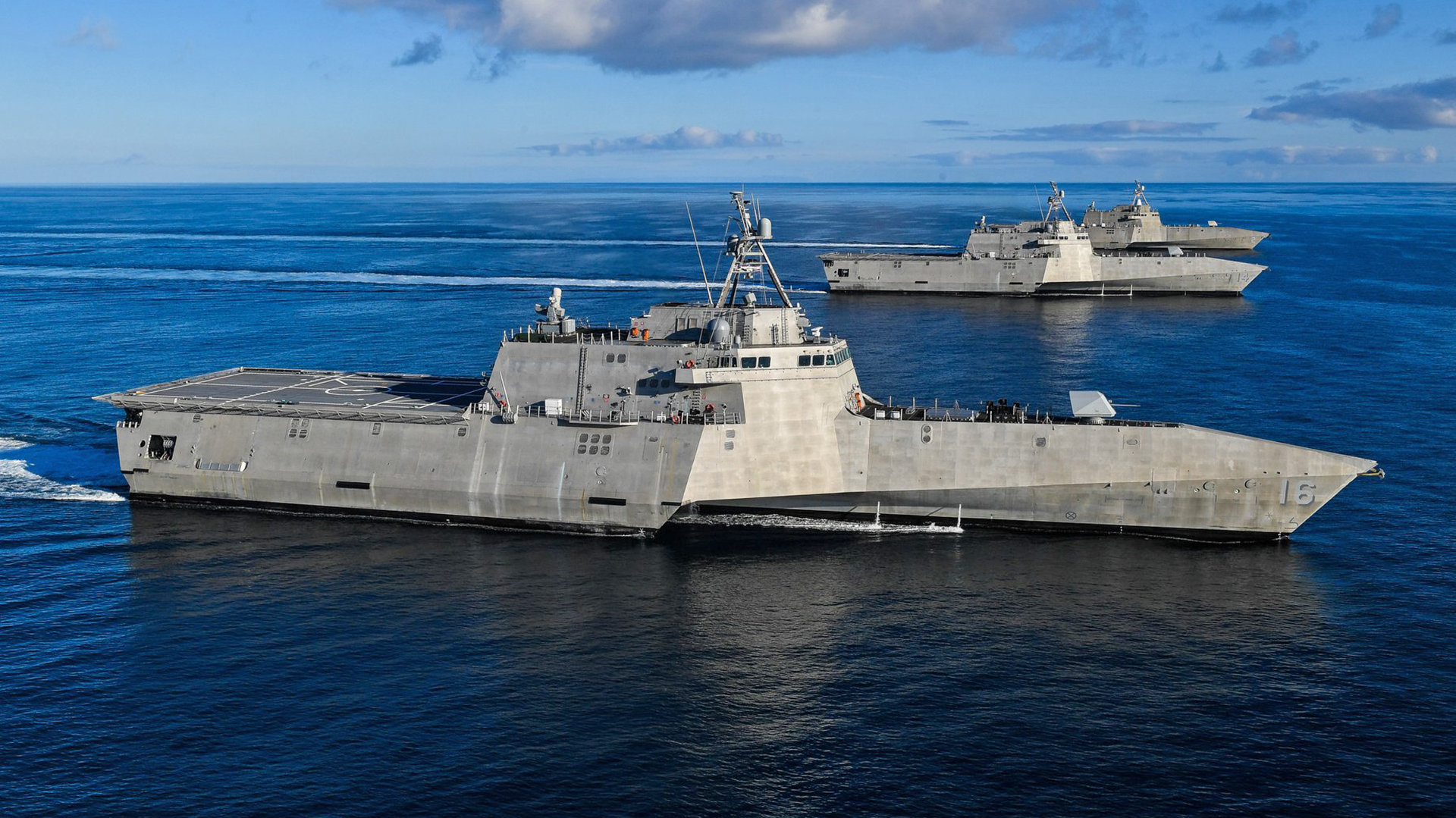The U.S. Navy plans to make six Littoral Combat Ships (LCSs), two Independence class vessels and four Freedom class vessels, available for sale through its Foreign Military Sales (FMS) program in the next two years. The oldest and youngest of the ships intended to be sold have been in service for just under eight years and just under three years, respectively.
The Navy first publicly raised the possibility of selling off a number of LCSs last year, as the service continues to try to nail down its own plans for what to do with these long-troubled ships.
Indication that the Navy plans to sell six of its LCSs were presented in its recent 2024 long-range shipbuilding plan. Formally called the Report to Congress on the Annual Long-Range Plan for Construction of Naval Vessels for the 2024 Fiscal Year, the shipbuilding plan is dated March 2023. The Navy currently has 13 Independence class LCSs in active service, while a further four are either under construction or being fitted out. The service also currently has ten Freedom class vessels in active service, with a further five currently being fitted out or prepared to enter service. So far, two Independence class vessels and one Freedom class vessel have been decommissioned. The newest Freedom class ship, USS Cleveland (LCS 31) was launched just a few days ago at the Fincantieri Marinette Marine shipyard in Wisconsin, an event that didn’t go so well which you can read more about in this War Zone piece.
The new shipbuilding plan stipulates that in the 2024 Fiscal Year, the Independence class vessels USS Jackson (LCS 6) and Montgomery (LCS 8) will be made available for sale via the Navy’s FMS program. Those ships were commissioned in 2015 and 2016 respectively. Then, in the 2025 Fiscal Year, the Freedom class vessels USS Wichita (LCS 13), Billings (LCS 15), Indianapolis (LCS 17), and St Louis (LCS 19) will similarly be made available for sale via the FMS program. Those vessels were commissioned in 2019 (LCS 13, 15, and 17) and 2020 (LCS 19).
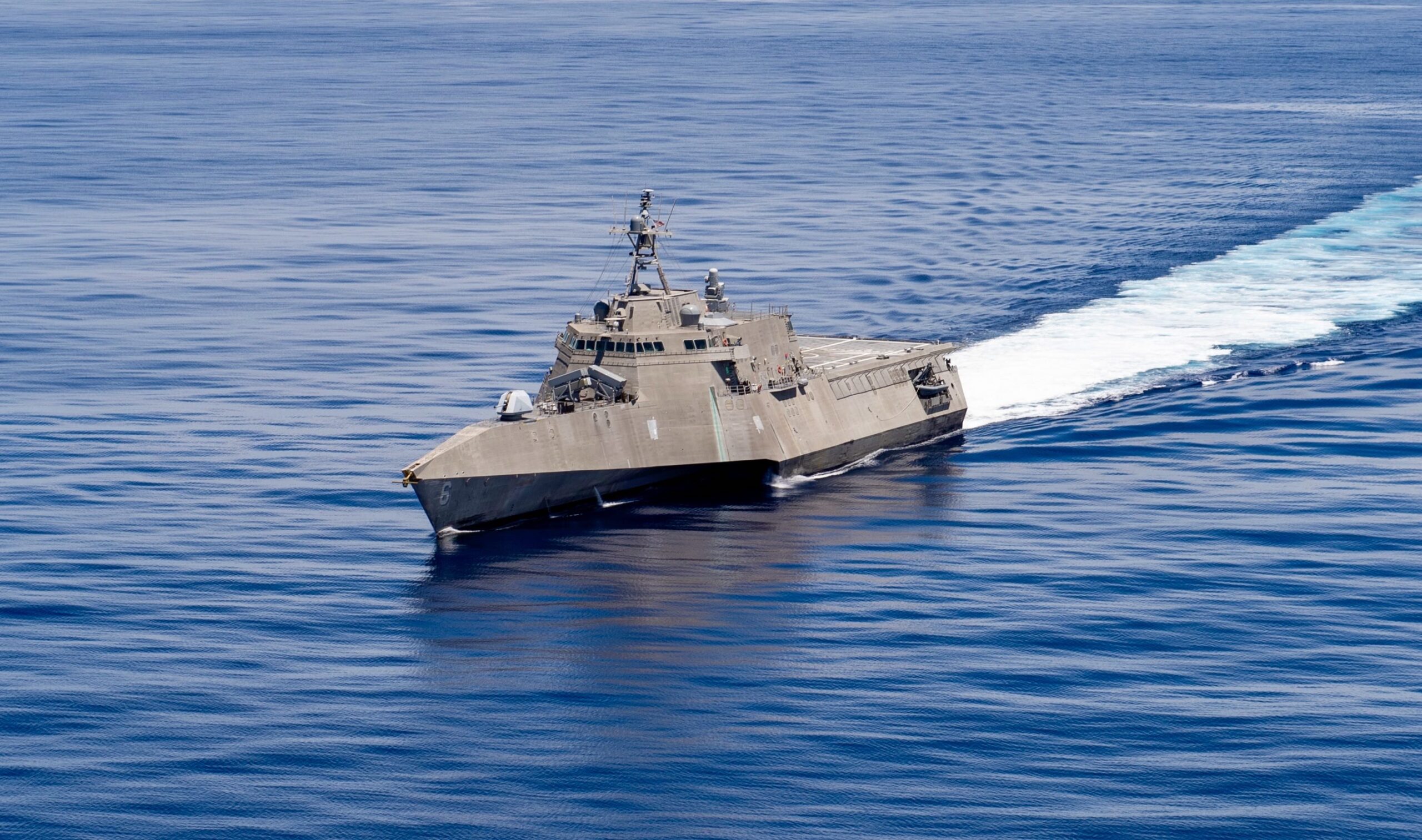
It’s unclear whether or not the Navy has identified any buyers or potential buyers for these ships already. In the recently released shipbuilding plan, the service notes that “Ships designated for FMS are retained in a hold status for no more than two years in accordance with Navy policy.”
Previously, the Independence class vessels USS Jackson and Montgomery were set to be decommissioned in 2024, and then placed into “Out of Commission, in Reserve” (OCIR) status. The Navy defines OCIR as the “status of a decommissioned Navy ship being held in reserve for future mobilization purposes,” meaning that such ships could be reactivated in the future.
The original decision to divest the two Independence class ships was primarily because of changes in the plan for a set of mission packages intended to be used on both subclasses of LCSs. Both the Independence class and Freedom class LCSs were originally designed to fulfill a multitude of roles within littoral zones through the use of swappable anti-submarine warfare, surface warfare, and mine countermeasure packages. The original intention was for all LCSs to be highly flexible vessels, with the ability to switch quickly from one mission set to another.
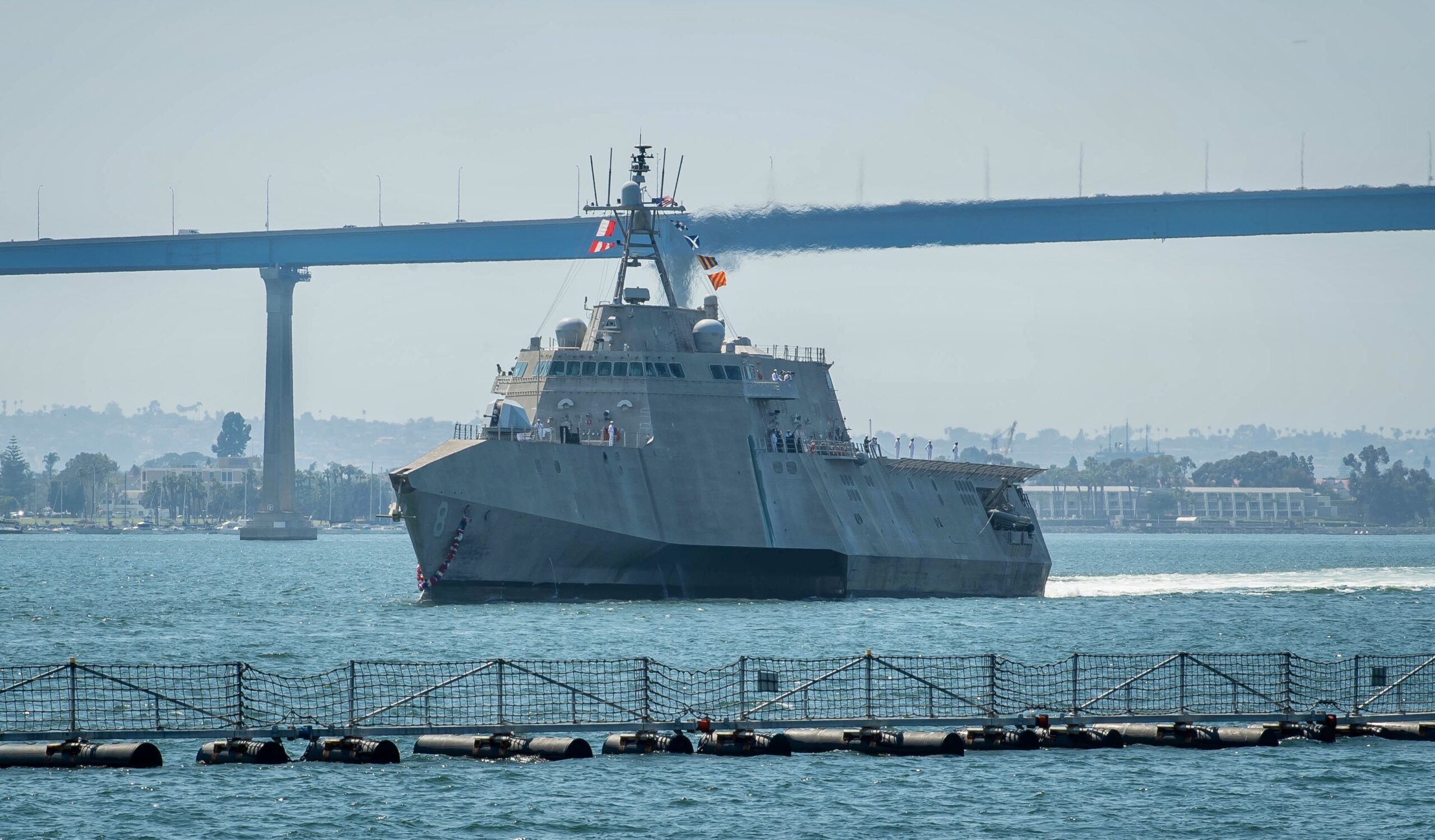
The Navy has since abandoned this plan entirely and the packages will be installed permanently – future Constellation class frigates are expected to provide the desired additional anti-submarine warfare capacity. At present, 15 Independence class LCSs are set to perform the mine countermeasure mission, while six Freedom class LCSs will perform the surface warfare mission.
As the 2024 shipbuilding plan suggests, the Navy is ridding itself of USS Jackson (LCS 6) and Montgomery (LCS 8), the eldest Independence class LCSs, because the service only requires 15 vessels of that class to execute mine countermeasure missions. That the Navy intends to sell these vessels via its FMS process is a new development, and an interesting one given that the shipbuilding plan also highlights that neither of the ships has completed lethality and survivability upgrades.
While the issues around mission packages have affected both classes of LCSs, talk of decommissioning and even selling various Freedom class LCSs to foreign buyers has been prominent as of late.
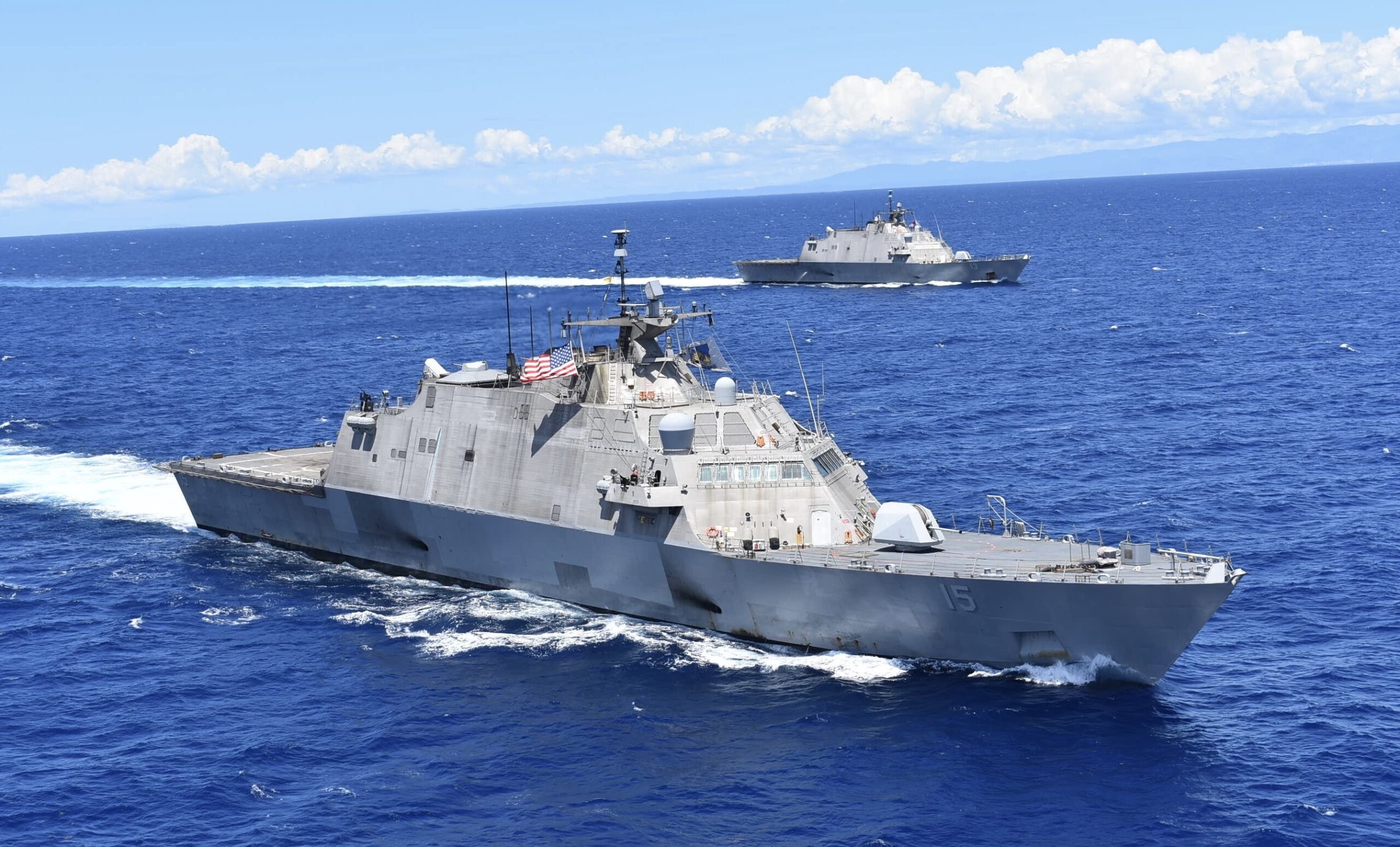
It was first thought that the Navy would decommission between eight and ten Freedom class LCSs as part of its 2023 Fiscal Year budget, before plans for a total of nine were suggested. However, a subsequent draft spending bill from the House Appropriations Committee indicated that a total of only four vessels of the class, rather than nine, might have ended up being decommissioned contrary to the Navy’s intentions. This was subsequently confirmed in the 2023 Fiscal Year National Defense Authorization Act, which states that no “more than four” LCSs would be retired, prepared to be retired, or otherwise placed in storage.
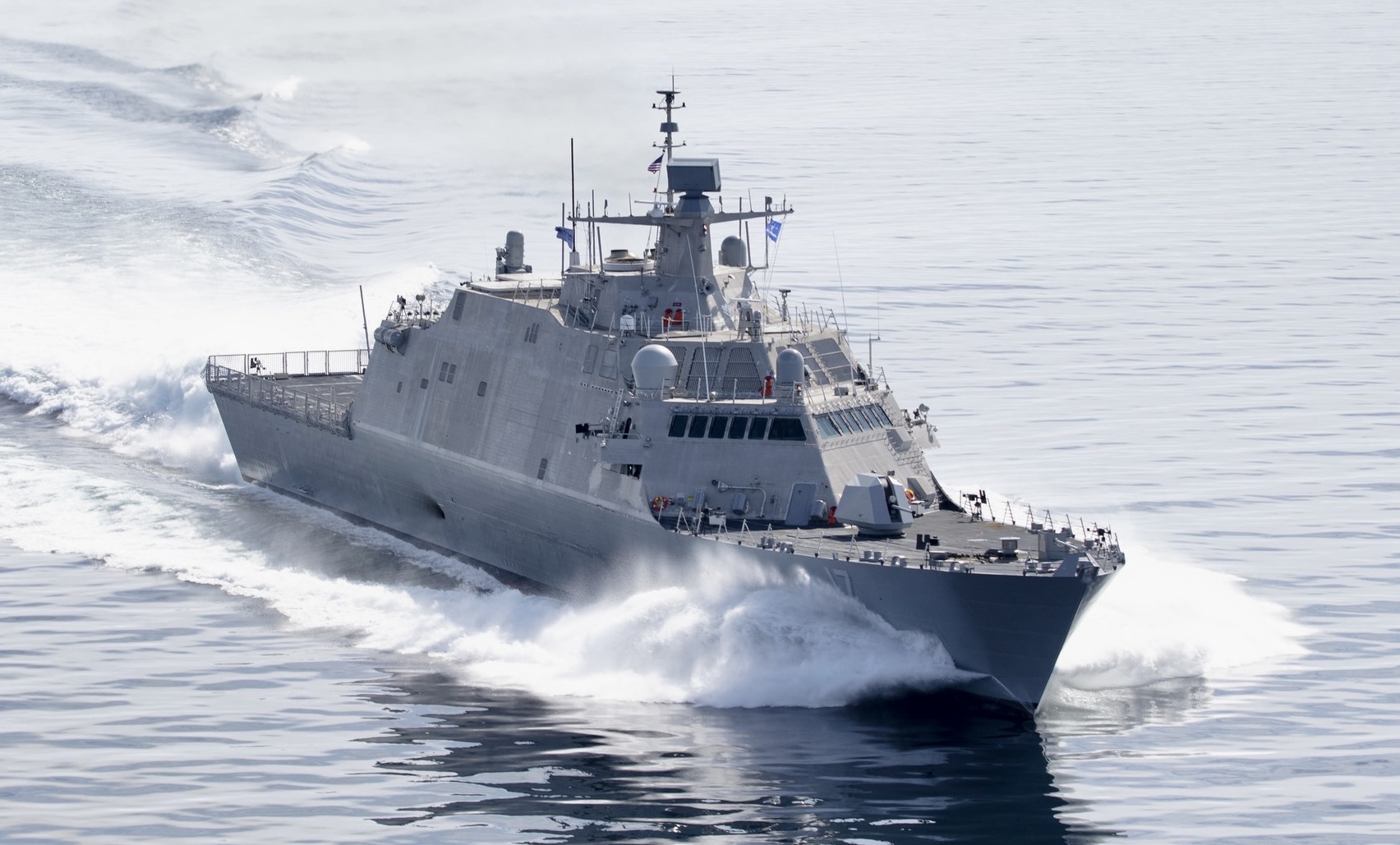
The notion of selling a number of Freedom class LCSs to foreign buyers was even proposed in May 2022 by Admiral Michael Gilday, the U.S. Navy’s chief of naval operations. Testifying at a congressional hearing on the Navy’s 2023 budget request, Gilday argued that various U.S. partners and allies – particularly those in South America – might be tempted to buy the vessels, which have more recently been put to use in counter-smuggling operations.

That said, whichever foreign buyer(s) chooses to purchase the four Freedom class LCSs and two Independence class LCSs will need serious funds to keep them seaworthy. As The War Zone previously reported, it’s been suggested that the annual cost of running a single LCS amounts to around $70 million, compared to approximately $81 million for an Arleigh Burke class guided-missile destroyer (DDG).
There will also likely be significant costs to repair and modify the vessels for whoever buys them. Since their conception, multiple design problems have cut across both LCS classes. Perhaps most notably, the Freedom class has suffered issues with its propulsion system as well as with its combining gear, preventing the vessels from meeting their intended performance potential.
Indeed, it was only in May last year that the Freedom class USS Sioux City (LCS 11) became the first LCS of either class to be deployed to Europe and the Middle East in areas the Navy originally intended to use the vessels. Of course, the news that the Navy now intends to sell a number of both LCS subvariants speaks broadly to the fact that the service is still having problems nailing down exactly what it wants to do with these ships in the present, and how many LCSs it needs precisely.
It certainly remains to be seen who might be interested in buying examples of either vessel class, and to what uses they might be put towards, after their time with the U.S. Navy. The price they will pay for these nearly new ships, which cost around half a billion dollars each, is another big question. If nothing else, the recent decision to sell a total of six LCSs in the coming years marks the latest chapter in the ever-evolving narrative that is the LCS story.
Contact the authors: oliver@thewarzone.com, joe@thedrive.com
